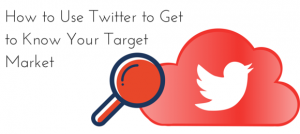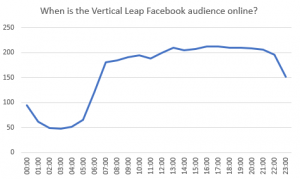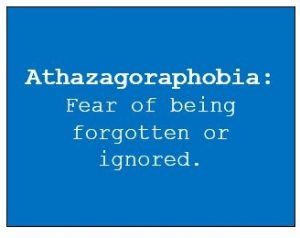
A lot has been written about the importance of email marketing.
And that’s for good reason: if we look at the ROI, email is the best-performing channel, with much higher conversion and retention rates than social media.
Email marketing is like a headed cabbage. It might seem like a simple concept, but it has many layers. Anyone who wants to become great at email marketing has to understand multiple concepts and juggle many skills at a time.

In this post, I’ll walk you through 10 areas of expertise that are essential to email marketing, and give useful tips for each one.
I’ve also prepared a special bonus for over-achievers at the end of the post, so be sure to read all the way through to the end.
1. Deliverability
If your email doesn’t get delivered, it doesn’t get opened. If it doesn’t get opened… well, you know the rest.
Making sure your emails get to their final destination is the first essential step in email marketing.
There are many variables that affect deliverability of your emails, including ISPs, MTAs, throttling, bounces, bulking, spam issues, and the quality of your content.
Here are a few easy rules that will help you achieve 99.5%+ deliverability:
Avoid SPAM complaints
- Don’t spam
- Use double opt-in
- Set expectations upfront, so subscribers know how often they’re going to hear from you
Avoid hard bounces
- Use double opt-in
- If you don’t use double opt-in, verify validity of collected email addresses in some other way:
- If you’re collecting emails in exchange for a freebie, send that freebie to their inbox vs. putting it on a thank-you page.
- If you’re collecting emails in a giveaway, send your first email to participants from a different account, so the wave of unsubscribes and bounces doesn’t affect sender reputation of your main account.
- If you’re collecting emails in exchange for a freebie, send that freebie to their inbox vs. putting it on a thank-you page.
Purge your list
Every 6 months or so, delete all your inactive subscribers. If they haven’t opened any of your last 20-50 campaigns, they probably won’t open the next 100. Such subscribers and you don’t need each other, so let them go.
Know how the Gmail Promotions tab works
The Gmail Promotions tab adds a new layer to email deliverability. If your email is delivered but ends up in the Promotions folder, the subscriber might only get to it much later, if ever.
The problem is that Gmail got pretty good at distinguishing personal emails from everything else, so whether you need to stress over the Promotions tab is debatable. However, it’s still good to know what can cause your emails to land there: bulky images, fancy styling, excessive links, different reply-to address and email header markup.
2. List building
Growing an email list is the most-talked about topic in email marketing today. Good marketers should have a grip of different subscriber acquisition mechanisms available to them, such as:
- Content marketing (i.e. blogging coupled with content upgrades)
- Guest blogging
- Lead magnets (steal a few ideas from the bonus at the end of this post)
- Webinars
- Giveaways
- Opt-in tools like popups, slide-in forms, and top of the page ribbons
- Social media (see section below)
3. Social media integration
Social media is not only good for building your brand image and gaining exposure; it can also help you add subscribers to your email list.
The good news is that almost any social media channel can be leveraged to grow your email list.
Here are a few ideas:
- Twitter lead generation cards
- Call-to-actions + sidebar apps on your Facebook page
- Inviting your Instagram followers through storytelling
- Email-gated content upgrades on Periscope
- Giving sneak previews of (exciting) emails in Snapchat stories
- Driving traffic to the opt-in freebies in your blog through Pinterest
- Collecting leads on Slideshare
4. Subscriber engagement
Everybody wants a big list, but few realize that it’s not a panacea for your business.
Even small lists can work magic if they are healthy and engaged. This is because engaged subscribers open more, click more, and buy more.
And once you learn how to engage your email subscribers you can apply that to a list of any size to optimize its effectiveness.
The top rule of email list nurturing is “give more than you ask for”.
Especially in the first 2-4 weeks after someone subscribes to your list, make sure you surpass all expectations of being helpful and overdeliver on a regular basis.
Once you establish trust with your new subscribers, continue your communication keeping in mind why people join and stay on email lists: they love the feeling of being on the “inside” of a private club.
Cultivate that feeling by:
- making them the first to hear new announcements;
- sending them exclusive content that’s not available on your blog;
- offering special deals to your subscribers.
Here are a few more tips on keeping your subscribers engaged:
- Segment your list and send more relevant info to segments
- Don’t lose your voice in automated emails
- Find the right “send” frequency: be on their radar without being annoying
- Make your emails feel like a continuous conversation (vs. a series of one-off emails)
5. Open rate
If you’ve ever sent an email campaign to a list of people, you might have engaged in the “open rate watching” behavior that looks at least somewhat like this:

Just 2 minutes after hitting “go” on my email campaign, I start refreshing my browser to watch the open rate stats roll in…
I know I’m not alone. We’ve all been there, right?
Email open rate is not just the subject line (although it’s important). It depends on a whole host of reasons, including:
- “From” name
- Preview text
- Send time
- Your list quality
- Your content

The more people open an email, the more people click, the more people buy, so make sure you always optimize your emails for a higher open rate.
6. Click rate
Most marketing emails get sent to trigger some action, whether you want people to buy, share, or engage with your stuff.
Any action in an email is measured by the click on your CTA (call to action). That’s why click rate (along with the conversion rate) is the ultimate metric in email marketing.
The “big secret” of achieving a high click rate is making a truly valuable offer. If your end product is not good, no tactics will save you.
However, if your fundamental offer IS good, then there are a few tips for optimizing your click rate:
Make your CTA crystal clear
Readers must immediately recognize the call to action even if they simply skim through the email. The easiest way to make your CTA stand out is to use buttons.
PRO-tip: use HTML-based buttons for best results. They’ll get displayed even if subscriber’s email client blocks images.
Use one CTA per email
Choice can be demotivating. The fewer options your subscribers have, the more they are likely to act. Using just one call to action eliminates the paradox of choice.
There are lots of resources to back this. Whirlpool got a 42% click-through-rate increase by dropping the number of CTAs in its emails from 4 to 1. HelpScout increased click-through rate by 17% by keeping the number of CTAs in its emails to one.
Evoke powerful emotions in your copy
Marketing is based on psychological principles, and the most effective campaigns take advantage of such powerful emotions as:
- Scarcity
- Curiosity
- Social proof
- Authority
7. Analytics and data
Any email marketing manager has to feel comfortable in the analytics dashboard of their ESP (email service provider).
Email marketing stats like open and click rates, bounces, unsubscribes, list growth and conversion rate can give powerful insights for what’s working (and what’s not) in your email marketing strategy.
Looking at the numbers and seeing trends, and with that, opportunities for experiments (A/B tests) is a skill that distinguishes a successful email marketing manager from someone with stagnant results.
The first step to a more thoughtful email marketing strategy is determining what exactly you want to achieve — your number one goal. Based on that goal, decide what your primary and secondary metrics should be and track them meticulously.
8. Automation
Email marketing automation is another topic that’s at the top of any digital marketing discussion these days.
And for good reason. Automated emails are timely, personalized and hyper-relevant to the reader. As a result, they drive open and click rates and positively affect subscriber engagement. The bottom line of all that — more revenue for your business.
Most ESPs these days have automation features, but you can also get sophisticated software to create advanced workflows. No matter what tools you’re using, you should be able to set up simple email workflows that get triggered in a number of different ways:
- when a subscriber gets added to a list,
- clicks a link in an email,
- views a page on your blog,
- clicks on one of your ads,
- becomes a qualified lead,
- downloads one of your content upgrades (freebies),
- any combination of these and more.
9. Segmentation
Segmentation is a powerful mechanism that lets you subdivide your list based on a certain set of characteristics. You can then send highly-targeted emails to subscriber groups within your list.
According to eMarketer,
- 39% of email marketers that practice list segmentation see better open rates;
- 28% see lower opt-out and unsubscribe rates;
- 24% see better email deliverability and greater revenue.
There are a number of ways you can segment your list simply based on campaign activity. Look at the following groups and see how you can serve them differently:
- subscribers who open most of your emails but don’t click
- subscribers who click but don’t convert (send them a new campaign with more reasons to purchase your product)
- subscribers who didn’t open the last email (if it was an important email, re-send it with a new subject line after a few days)
- subscribers who have consistently replied to your emails (they are your biggest fans, so treat them accordingly)
Skillful email marketers should also be able to segment based on past purchases, interest level, demographics, and much more.
I have included 7 smart ideas for list segmentation in the bonus at the end of this post.
10. Attribution
Attribution is one of the most advanced topics in digital marketing.
A good email marketing manager wants to know the exact payoff of each tactic they use. When you know how your marketing efforts covert, you are better informed to develop further strategy and allocate budget.
Although email marketing is highly trackable, email attribution is not a straight line. For many companies, a linear A-to-B-to-C email interaction is increasingly rare.
Today, consumer behavior looks more like this:
Someone hears an ad in a podcast and then googles the company. They are not ready to buy yet, but they sign up for the newsletter. At some point in the future, they receive an email from the company and forward it to a colleague who is interested in the product. The colleague is then walking down the street and sees the product in a window. She remembers the email and goes into the shop to purchase.
It’s hard to attribute this conversion to any particular event, and the truth is that this will only get messier in the future. However, email marketers need to keep attribution in mind to continue making the right decisions when they analyze reports and develop strategies.
Want to become a better email marketer?
Woof, we’ve covered a lot here. Don’t get discouraged if you’re not an ace on all 10 of these topics — you can always improve.
To help you with that, I prepared a special bonus. It includes a few key resources for taking your email marketing to the next level:
- A list of 15 lead magnet ideas to help you grow your email list faster;
- 7 smart ways you can segment your list to keep it healthy and engaged;
- A video tutorial on how to delete inactive subscribers from your email list (to keep your open rates high).
To get access to the bonuses, sign up here (it’s completely free).
Digital & Social Articles on Business 2 Community(63)
Report Post







